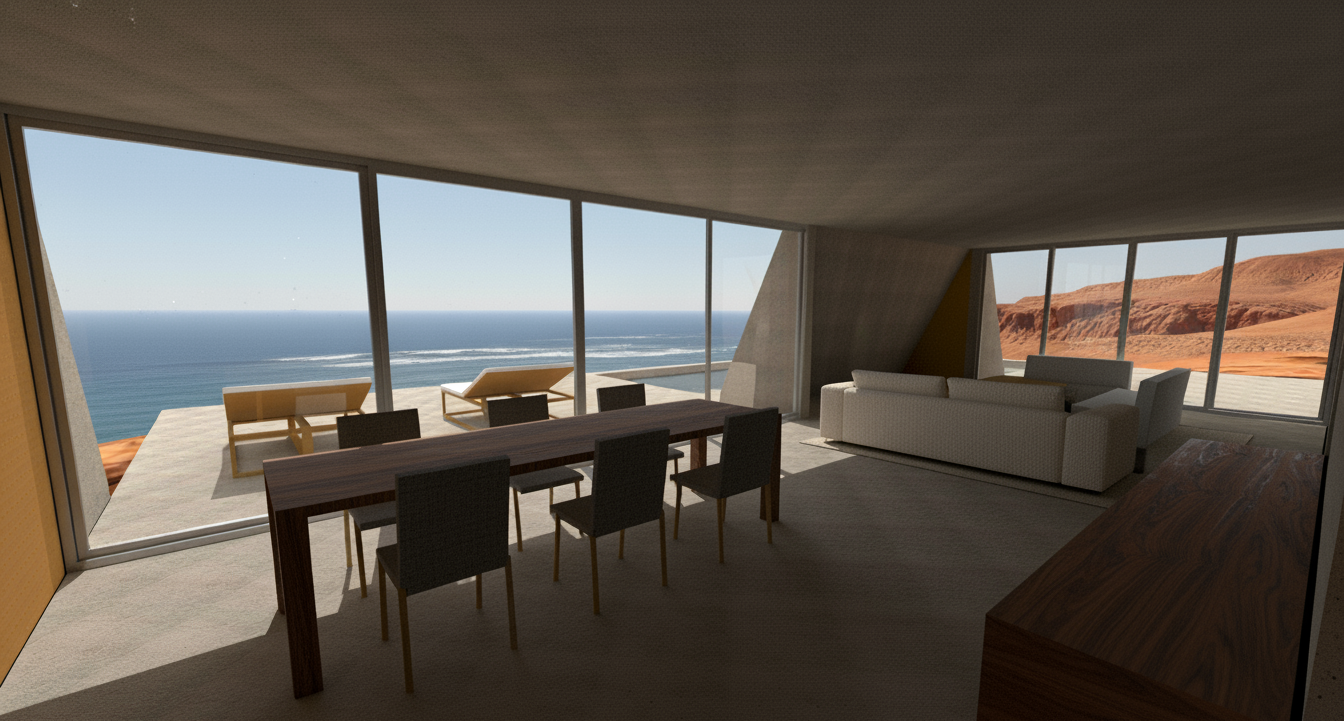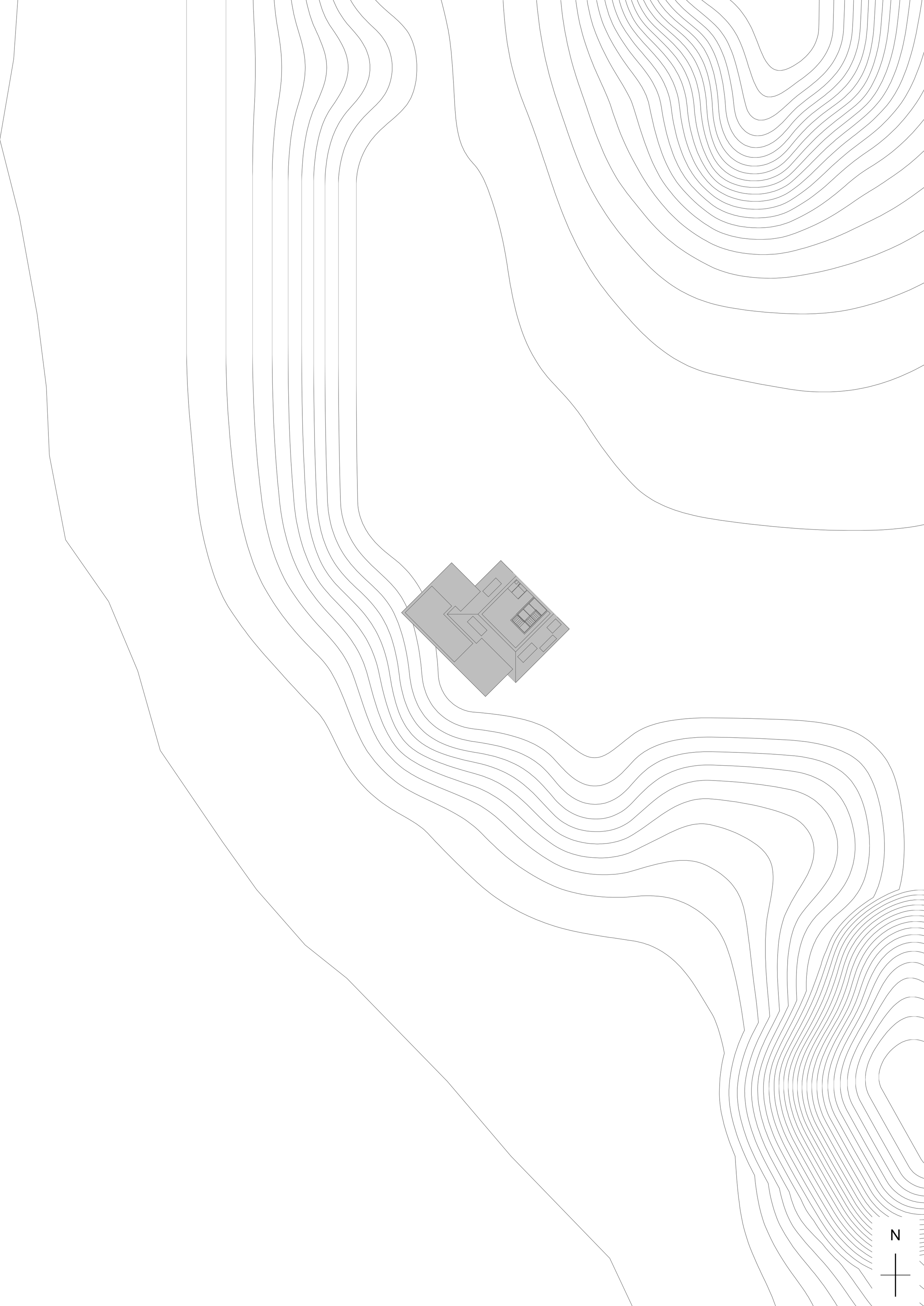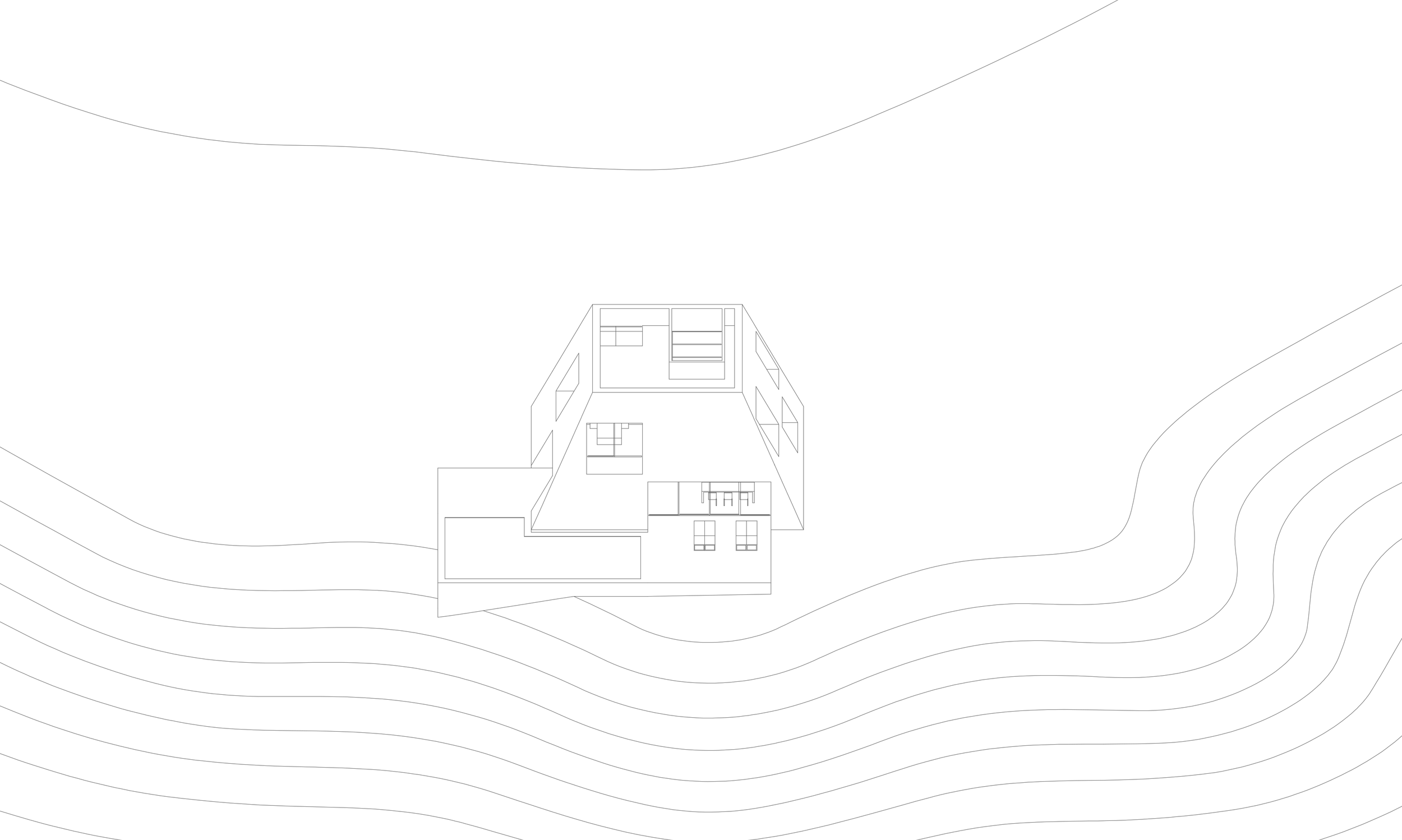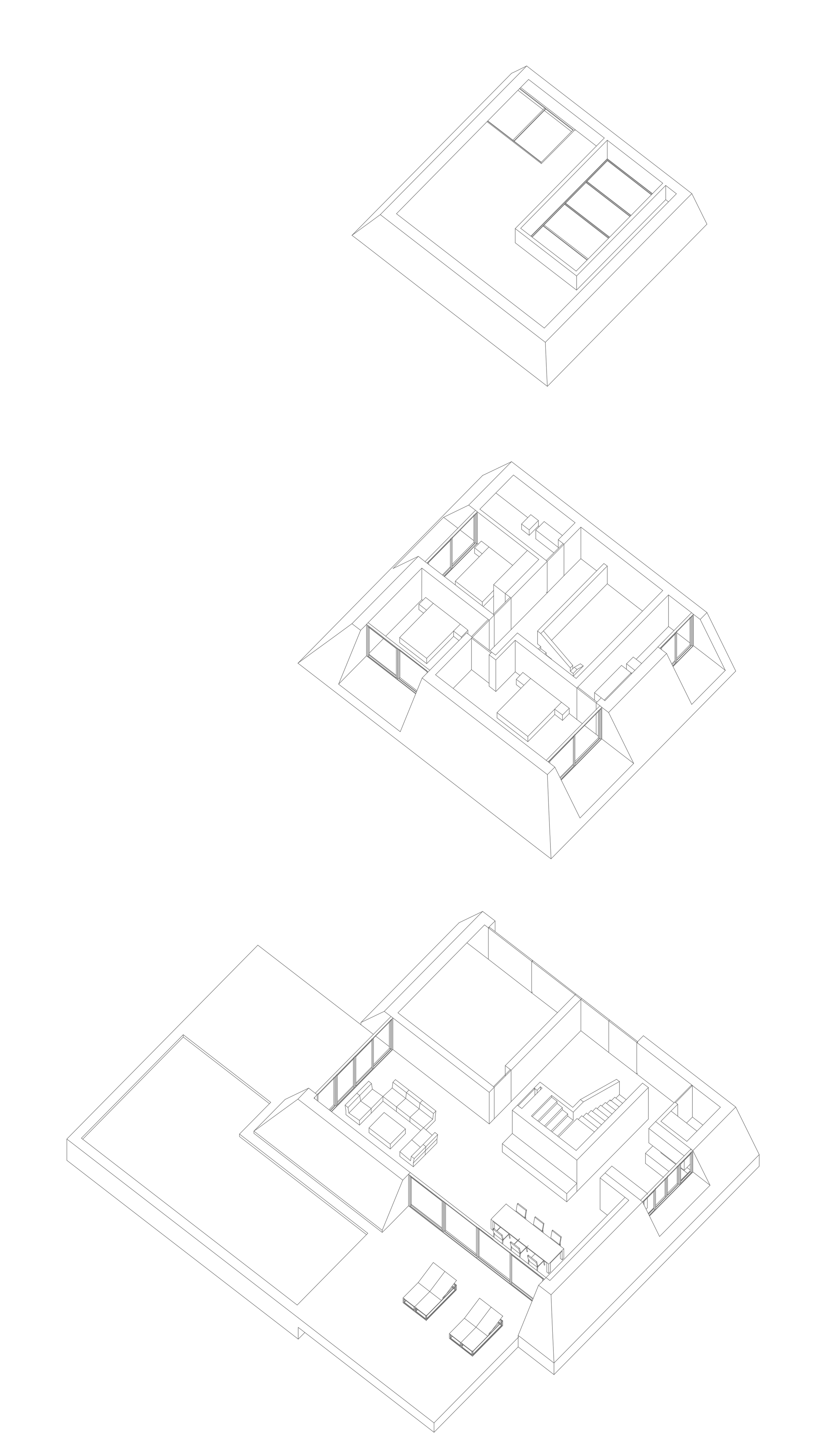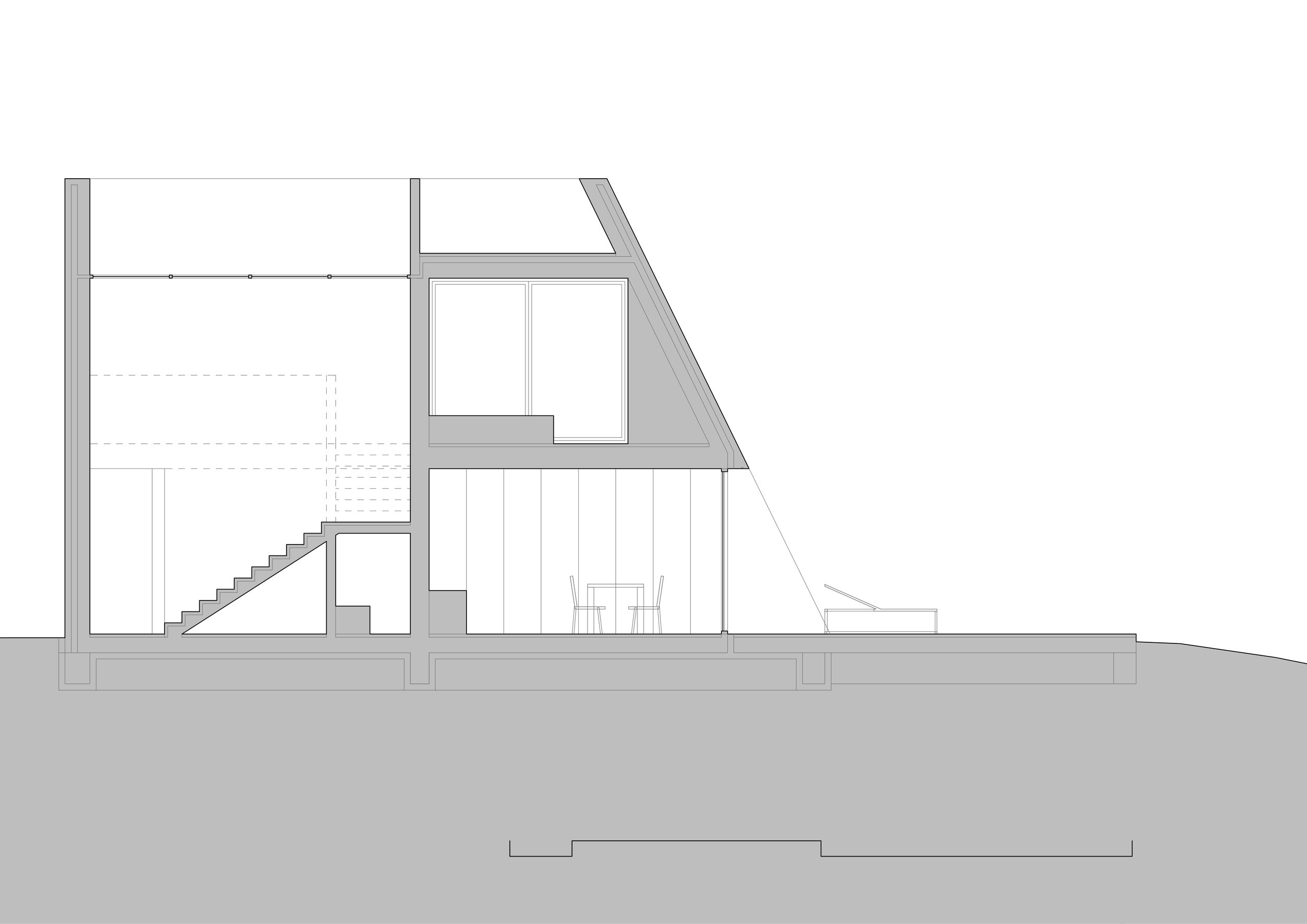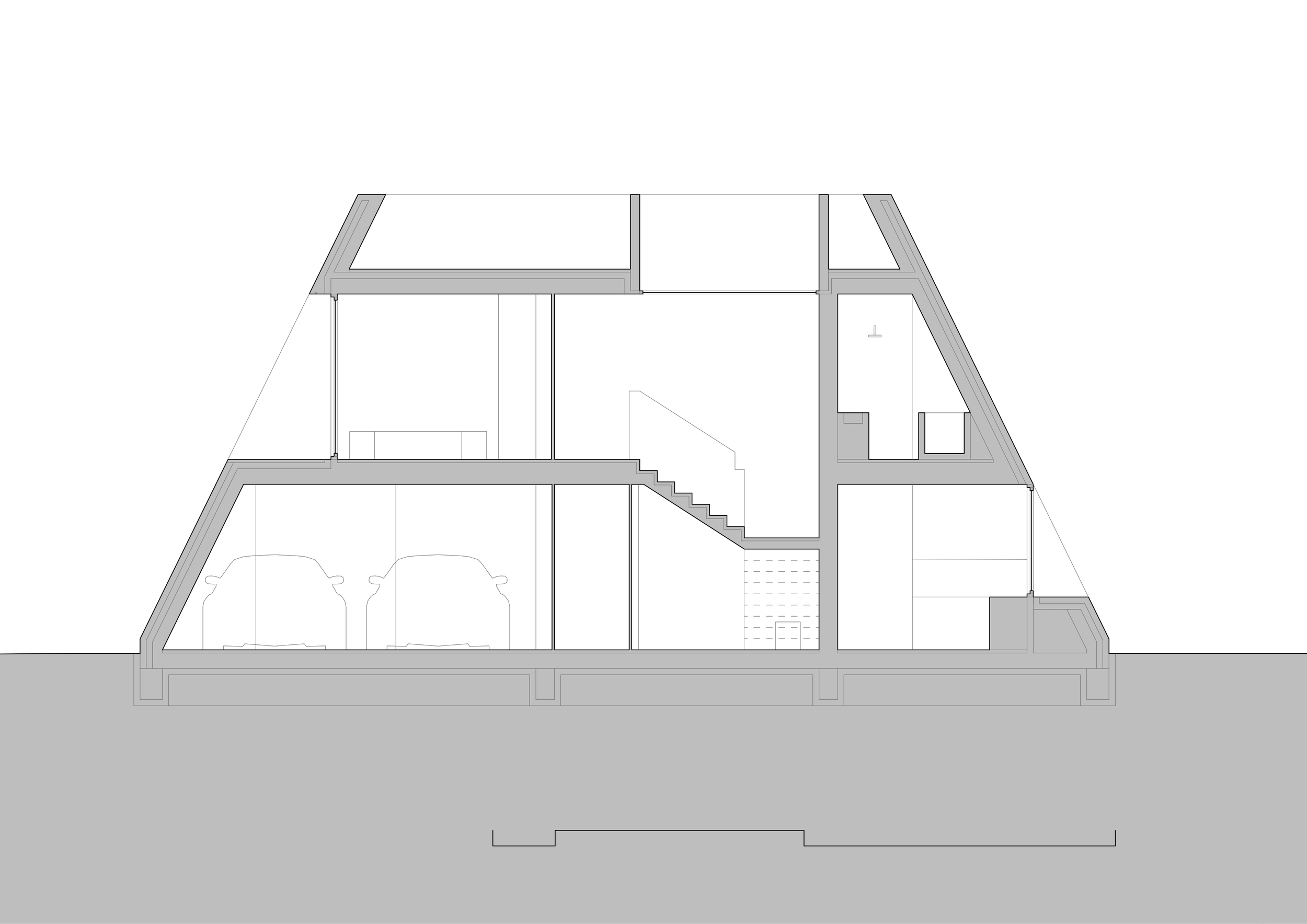House in Atacama, Chile
This concrete residence, set on the dramatic coastline of Chile's Atacama Desert, is a direct architectural response to its extreme environment. The design merges a minimalist aesthetic with a powerful, site-specific strategy, creating a sustainable luxury retreat that is both visually striking and functionally sound.
The home's defining feature is its monolithic, angular form, characterized by sloped concrete walls. This is a direct reference to the structural and aesthetic principles of Inca architecture, grounding the modern design in the region's deep history. Functionally, these inclined walls are the core of the passive cooling strategy. They provide critical shade for the large glass openings, significantly reducing solar heat gain and keeping the interior comfortable without mechanical cooling.
The use of concrete is central to the design's performance and aesthetic. Its inherent thermal mass helps regulate the desert's extreme temperature swings, while its raw, textured finish allows the structure to harmonize with the rugged coastal landscape. Inside, the open-plan living area is oriented toward panoramic views of the Pacific Ocean, creating a seamless connection to the horizon. In contrast, private spaces like bedrooms offer more intimate, framed views of the inland desert, providing quiet moments of contemplation.
The result is a home that is both a tribute to its cultural landscape and a functional retreat designed for its climate. By integrating historical precedent with passive environmental design, the project achieves a timeless and sustainable form of minimalist luxury.
Research
Social Aspects: This private residence fosters well-being through a deep connection to its natural surroundings. The design prioritizes tranquility and mindfulness, offering occupants a secluded retreat from the everyday. By creating distinct relationships with the ocean and the desert, the architecture encourages introspection and a powerful sense of place. The open living areas promote social interaction among inhabitants, while the private, contemplative spaces cater to individual well-being. Keywords for this aspect include user-centric design, architecture for well-being, mindful architecture, and private luxury retreat.
Aesthetic Aspects: The home's architectural style is a blend of minimalism and Brutalism, characterized by its raw concrete form and clean, geometric lines. This monolithic structure draws inspiration from the enduring principles of Inca architecture, particularly in its use of sloped walls which are both aesthetically striking and functional. The aesthetic is a direct response to the dramatic coastal desert landscape, creating a harmonious dialogue between the built form and its natural context. Relevant keywords include contemporary residential design, minimalist facade, Brutalist architecture, site-specific design, and Inca-inspired architecture.
Material Aspects: The primary material is exposed concrete, chosen for its durability in the harsh coastal environment and its significant thermal mass. This material choice is central to the project's sustainability and aesthetic, allowing the building to absorb the day's heat and radiate it back during the cool desert nights. Large expanses of high-performance glazing are used to maximize views while minimizing solar heat gain, crucial in this extreme climate. Keywords related to materials include sustainable building materials, exposed concrete, thermal mass construction, and high-performance glazing.
Engineering and Construction Aspects: The defining engineering feature is the passive cooling strategy, driven by the angled concrete walls that provide self-shading for the glass openings. This innovative structural design mitigates solar heat gain, a critical consideration in the Atacama Desert. The construction in a remote location likely necessitated meticulous planning and potentially the use of prefabricated elements to ensure precision and efficiency. Given its location in Chile, the structure would also incorporate seismic-resistant design principles, a concept also present in the inspirational Inca architecture. Key engineering keywords are innovative structural design, passive cooling strategies, seismic-resistant structures, and remote construction techniques.
Urban Aspects: As an isolated residence, this project does not engage with a traditional urban fabric. Instead, its "urban" context is the vast, natural landscape of the Atacama Desert and the Pacific Ocean. The design's success lies in its sensitive integration with this remote environment, creating a powerful sense of place rather than contributing to a city skyline. It is a prime example of a site-specific architectural response where the landscape is the primary contextual driver. Keywords for this unique context include remote residential architecture, landscape integration, and architecture as land art.
Environmental Aspects: Sustainability is at the core of this design, primarily through its passive solar design and use of thermal mass to regulate temperature without mechanical systems. The sloped walls are a key feature of the eco-friendly design, providing shade and reducing energy consumption for cooling. Given the arid location, strategies for water management, such as rainwater harvesting and greywater recycling, would be essential for the home's ecological footprint. This project exemplifies sustainable luxury, proving that high-end design can also be environmentally responsible. Relevant keywords are sustainable architecture, eco-friendly design, passive solar design, net-zero potential, and water harvesting in arid climates.
Economic Aspects: The economic viability of this project is rooted in its creation of a unique, high-value property in a desirable, remote location. The use of durable, low-maintenance materials like concrete contributes to its long-term value and reduces lifecycle costs. While the initial investment for construction in a remote area may be high, the sustainable design reduces ongoing operational costs, particularly for energy. This type of luxury real estate development can also have a positive, albeit small-scale, impact on the local economy through the use of local labor and materials where possible. Keywords include cost-effective construction, long-term value in architecture, luxury real estate development, and sustainable investment.


